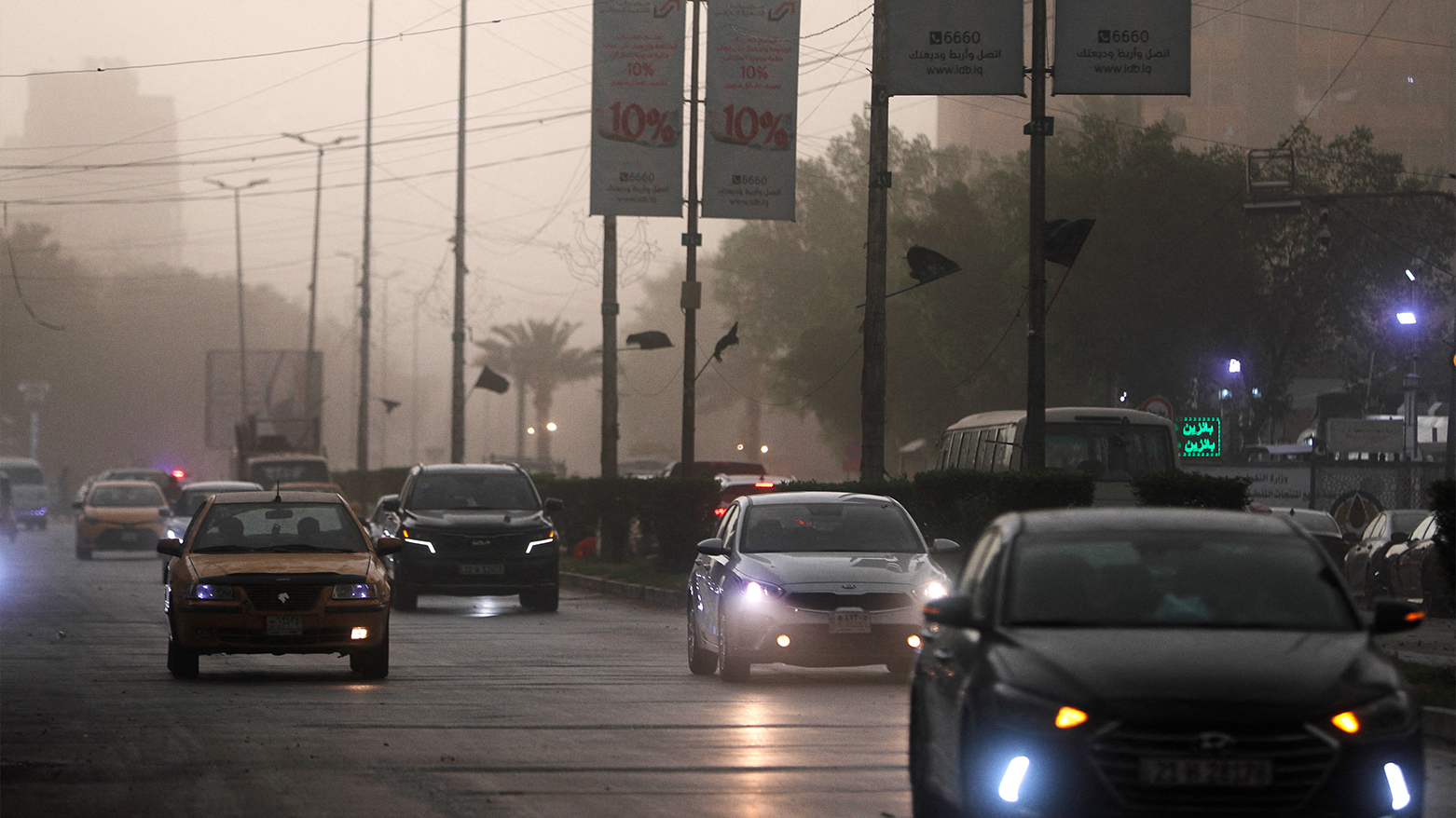Sandstorm Blankets Baghdad, Disrupts Daily Life
Environmental researchers have long warned that unless major reforestation and land restoration initiatives are implemented, Iraq could witness up to 300 dust storms annually in the coming decades.

By Kamaran Aziz
ERBIL (Kurdistan24) — A massive sandstorm swept through Baghdad and surrounding areas on Monday morning, plunging Iraq’s capital into a haze of dust and debris that reduced visibility to just one kilometer and triggered urgent warnings from traffic authorities.
The storm, accompanied by sporadic thunderstorms, emerged in the early hours and quickly disrupted life across central and southern regions.
The Baghdad Traffic Directorate issued immediate advisories urging drivers to exercise extreme caution, particularly on external roads connecting Baghdad to southern provinces. Authorities warned of severely diminished visibility, urging motorists to maintain safe distances between vehicles and avoid speeding.
In a statement carried by state media, the General Authority for Meteorology and Earthquake Monitoring confirmed earlier predictions of unstable weather across the country, noting that the confluence of regional climatic systems had created conditions for both rainstorms and dust activity.
“A mixture of cloudy skies, isolated rainfall, and thunderstorm patterns, alongside widespread dust storms—particularly in desert and open plain areas—are affecting much of Iraq,” the Authority stated.
Meteorologists attributed the disturbance to a seasonal transition pattern common in late spring, where shifting wind directions across the Syrian Desert and the Arabian Peninsula drive massive quantities of sand into Iraq’s interior regions.
According to a detailed forecast released by the Iraqi Meteorological Organization, the storm’s intensity peaked by midday Monday and was expected to subside by the evening.
This latest episode underscores Iraq’s increasing vulnerability to dust and sandstorms, a phenomenon experts say has become more frequent and severe in recent years due to prolonged drought, desertification, and declining vegetation cover.
In 2022 alone, the Iraqi government recorded over a dozen major sandstorm events, disrupting air travel, affecting health services, and triggering spikes in respiratory illness.
Environmental researchers have long warned that unless major reforestation and land restoration initiatives are implemented, Iraq could witness up to 300 dust storms annually in the coming decades.
The Ministry of Environment, in cooperation with the World Bank and United Nations Environment Programme, has acknowledged the urgency of establishing green belts around major cities and implementing watershed management programs to reduce soil erosion and improve air quality.
While Monday’s storm has not yet caused significant damage or casualties, its disruption of daily life and transportation once again highlights the urgent need for climate adaptation strategies. Schools in several southern districts were briefly delayed in opening hours, and traffic congestion paralyzed key arteries in Baghdad during the morning commute.
The Baghdad Traffic Directorate has assured residents that traffic patrols are monitoring road conditions and assisting motorists where needed. Meanwhile, weather officials confirmed that conditions across central and southern Iraq are expected to normalize by Monday evening.
As Iraq braces for a hotter, drier future, today’s storm serves as a stark reminder of the country’s mounting environmental challenges—and the growing urgency to address them before they become unmanageable.
